How Much Does It Cost to Install a Sauna?
A sauna is a room where one or more people sit, relax, and enjoy dry heat. The sauna’s temperature is kept at 158 to 212 degrees Fahrenheit (F). The relative humidity hovers at 10 to 20%. The relative humidity hovers at 10 to 20%. Installing a sauna in your home allows you to enjoy it daily and reap the related health benefits, as excessive sweating is believed to cleanse the body of toxins, ease pain, reduce stress levels, improve cardiovascular function, and revitalize the immune system.
One of the key deciding factors in the final cost of the sauna is the heating source. Electric, gas, and wood-burning are typically the least expensive. Infrared heated saunas have a large range of pricing, but they are somewhat expensive for a quality product. The national average costs range between $3,000 and $6,000. Most consumers spend around $4,500 for a four-person steam sauna with a wood bench, door with a window, additional ventilation, and LED lighting. The lowest cost is typically no less than $2,000 for a Finnish sauna, wood bench, and tubular lighting, while the highest can be as much as $10,000 for an infrared sauna, steam generator, stainless steel bench, and mood lighting.
Sauna Installation Cost
| Sauna Prices | |
|---|---|
| National average cost | $4,500 |
| Average range | $3,000-$6,000 |
| Low-end | $2,000 |
| High-end | $10,000 |
In this guide
Sauna Prices by Brand
Sauna Installation Cost
Cost to Build a Sauna by Size
Sauna Cost by Type
Sauna Floor Costs by Material
Sauna Door Cost by Material
Sauna Bench Cost
Sauna Bench Construction Cost by Size
Sauna Heater Cost
How Much Does a Sauna Cost to Run?
Sauna Insulation
Sauna Lights
Turn Bathroom Into a Sauna
Benefits of Using a Sauna
Prefab Sauna Installation Cost
Custom Sauna Cost
Sauna Maintenance Cost
Indoor vs Outdoor Sauna Cost
Dry vs Wet Sauna
Sauna vs Steam Room Cost
Hot Tub vs Sauna Health Benefits
Enhancement and Improvement Costs
Additional Considerations
FAQs
References
Sauna Installation Cost by Project Range
In-Home Sauna Cost by Material
A variety of materials are commonly used in various sauna constructions. The woods used to construct a sauna can normally withstand excessive heat and moisture without twisting, bending, bowing, or warping. Metal is normally not used in a sauna unless it is stainless steel because other types can corrode. Stainless steel benches and handrails 1 are common, however.

| Material | Cost per sq.ft. (Only Material) |
|---|---|
| Pine | $2 - $4 |
| Cedar | $3 - $7 |
| Spruce | $4 - $8 |
| Vertical-Grain Hemlock Sauna | $6 - $9 |
| Nordic White Spruce | $13 - $20 |
| Redwood | $30 - $35 |
Pine Sauna
Pine is one of the most widely used materials for the outer walls of the sauna. The wood comes from a coniferous tree that grows in Europe and Asia. Pine can be thermally modified to resist mold and mildew, so it is a good choice for saunas. It also has a beautiful natural pattern ingrained in the wood that looks even more interesting when stained. Expect to pay $2 to $4 per square foot 2.
Cedar Sauna
Western red cedar is an excellent option for the inside, benches, and outside of your sauna. Its natural resistance to mold, mild, and moisture combined with the fact that it doesn’t overheat or secrete resin, make cedar the perfect sauna material. The tree grows in western North America, carries a pleasant aroma, and sports many shades of red. To use cedarwood for a sauna, you will pay about $3 to $7 per square foot.
Spruce Sauna
Spruce is often a popular choice for sauna wood. However, its knots make it unfriendly for sauna use. Additionally, it is a thinner wood, has an inconsistent color, and is prone to warping and bowing. People usually choose spruce saunas because they are less susceptible to cracking, and its color makes a sauna warm and light. The cost for spruce is $4 to $8 per square foot.
Vertical-Grain Hemlock Sauna
The Canadian Hemlock tree is a coniferous North American pine tree that produces a light buff color, coarse grain wood. The wood gives off a fragrant aroma and is strong and knot-free. It is suitable for the inside or the outside of a sauna as it distributes heat evenly and will not warp. The pricing for a vertical-grain hemlock sauna is $6 to $9 per square foot.
Nordic White Spruce Sauna
Taken from the Norway spruce, this wood is almost white and has a slightly yellowish undertone. These trees are grown in Northern, Central, and Eastern Europe, and the wood is often used as timber. When used for a sauna, it is generally used for the outer walls of the box. It possesses a nice pattern within the wood that can be enhanced with stain. Nordic white spruce is the traditional wood used in Finnish saunas. Pricing is higher at $13 to $20 per square foot.
Redwood Sauna
While a rich red color when it is new, redwood 3 fades over time and becomes a dull gray. The acids that are in the wood react to body oils and perspiration and change the color rather quickly. Redwood is strong wood and won’t warp due to the heat and humidity of a sauna. Just like cedar, it has a natural resistance to mold, mildew, and insects. The cost for a redwood sauna is $30 to $35 per square foot.
Sauna Prices by Brand
Prefab or pre-built sauna kits are more portable, easier to install, and come in various materials. Many brand name saunas are prebuilt and can be used indoors or outdoors. Custom-built saunas allow for more creativity and bring more return on investment when it comes to selling your home. Major brand pricing varies according to whether the sauna is prefab or custom, size, and features.

| Brands | Costs (Without Installation) |
|---|---|
| Finnleo | $500 - $2,700 |
| Vital Health | $2,500 - $5,000 |
| Heavenly Heat | $2,900 - $5,800 |
| Rocky Mountain Saunas | $3,000 - $5,200 |
| Finlandia | $3,200 - $12,000 |
| Sunlighten | $3,400 - $6,500 |
| Clearlight | $3,600 - $8,500 |
| SaunaCore | $6,000 - $11,500 |
Finnleo Sauna Cost
Finnleo sells infrared and traditional saunas for indoors and outdoors. It is the largest steam bath and sauna company in the world and has stayed true to its Finnish roots. Finnleo has many positive reviews and high-quality products. They carry a one-person sauna for the low price of $500. The cost for a Finnleo sauna ranges from $500 to $2,700 plus installation costs.
Vital Health Saunas
Vital Health Saunas is located in sunny San Diego, California. The company offers far and full spectrum infrared saunas. Recent reviews say the company offers high-quality, affordable saunas. Their customer service line allows you to speak to a live person, which gives the customer a better experience. The cost of a Vital Health sauna is $2,500 to $5,000 plus installation costs.
Heavenly Heat Sauna Prices
Heavenly heat came on the sauna scene in 1988, manufacturing only far infrared products. These saunas are designed for people who are chemically sensitive as they do not use toxic glues, adhesives, or wood. Heavenly Heat manufactures all of its saunas in the U.S. but imports Finnish heaters. You can expect to pay $2,900 to $5,800, excluding installation.
Rocky Mountain Saunas
If you hadn’t guessed, Rocky Mountain Saunas is based in Colorado. Veteran and family-owned and operated, the company is relatively new. Offering infrared saunas, Rocky Mountain produces a 100% green product and offers factory direct pricing and an unlimited lifetime warranty on all residential saunas. The cost of a Rocky Mountain sauna is lower than most at $3,000 to $5,200 plus installation.
Finlandia Sauna
Finlandia Sauna is one of the oldest sauna companies in the U.S. Its founding father is a native of Finland who grew up using saunas for relaxation and health benefits. Finlandia works towards providing authentic Finland saunas and imports many of its parts and accessories from its native country. Pricing starts at $3,200 and goes up to $12,000 plus install costs.
Sunlighten Saunas Cost
Sunlighten, based in California, is a relatively new sauna company. Founded in 1999, Sunlighten only sells infrared saunas. Consumers can choose from full spectrum, near, far, or mid-infrared. The company has grown exponentially and is the home of the Solocarbon infrared technology, which lowers blood pressure. This led to a partnership with the American Heart Association. The cost of a Sunlighten sauna is $3,400 to $6,500 plus installation.
Clearlight Sauna Prices
Clearlight has been around for over 20 years and boasts of using only the latest scientific technology in saunas. They only carry full spectrum infrared models and use non-toxic glues and varnishes for anyone allergic to chemicals. Residential use products are backed by a lifetime warranty that covers the entire sauna. Buyers pay $3,600 to $8,500 without installation.
SaunaCore Prices
The company SaunaCore sells infrared, traditional, and stand-alone steam heater saunas. One of the few sauna companies that manufacture its products mostly in the U.S., SaunaCore saunas are somewhat pricey at $6,000 to $11,500. They feature a less expensive brand produced in China, like many other sauna companies. Saunacore is known for producing one of the purist saunas available.
Sauna Installation Cost
A sauna can be installed anywhere in a home that affords adequate space. Many people opt to place a sauna in the master bedroom, bathroom, or garage. Electricity and water must be readily available wherever you opt to install a sauna. If they are not available, you need to have them installed. A plumber charges $45 to $200 per hour. An electrician charges $40 to $100 per hour.
Remember that the doors of a sauna open out. You need to make sure that you have enough space to place the sauna in the room and allow a sufficient area for the doors to open outward. A custom-built sauna requires hiring a contractor to create the design and complete the construction. The custom-designed sauna must be thoroughly insulated, especially in the ceiling where heat readily escapes.
When installing either a prefabricated or custom-designed sauna, the homeowner needs to hire an electrician to install a 220-volt circuit in the home’s existing electrical panel. A 220-volt receptacle needs to be located near the sauna. For such a job, most electricians charge from $500 to $800 depending on the complexity of the wiring and the materials needed.
Many factors affect the cost of a custom-designed sauna. Most carpenters charge an average of $40 to $120 per hour plus the cost of materials. Overall, the cost to have a custom-built four-person sauna that measures 8 x 5 feet professionally installed will average $7,140.
Cost to Build a Sauna by Size
One of the ways that pricing differs for saunas is the size. Manufacturers build by the number of people that can comfortably fit into the chamber. Although it is recommended that each person have at least two feet, you may want to allow for a bit more to accommodate some guests wanting to recline. The pricing below includes installation.

| Size | Costs (Installation Included) |
|---|---|
| 1 person (3 x 6 x 3 feet) | $2,000 - $3,500 |
| 2 - 4 people (6 x 6 x 4 feet) | $3,000 - $6,000 |
| 5 - 7 people (8 x 6 x 12 feet) | $6,000 - $9,000 |
| 8 - 10 people (12 x 6 x 12 feet) | $9,000 - $10,000 |
Sauna Cost by Type
There are several types of saunas that you might consider when trying to decide which one works best in your home. The prices given in the table are all for two- to four-person saunas and include installation:

| Type of Sauna | Cost (Including Installation) |
|---|---|
| Infrared | $2,000 - $12,000 |
| Smoke | $3,000 - $4,000 |
| Wood Burning | $3,000 - $4,000 |
| Electric | $3,000 - $5,000 |
| Steam | $4,000 - $6,000 |
Infrared Sauna Cost
If you are a sauna purist, you may feel that an infrared sauna isn’t really a sauna because there is no steam involved. The infrared lights heat the body for a more pleasant experience. The costs range from $2,000 to $12,000. Less expensive infrared saunas may emit harmful gases from the wood during the heating process.
Be aware that there are two types of these saunas, far-infrared and near-infrared, and some models include both. Near-infrared saunas or NIR stimulates cellular ATP production to help with wound healing, joint 4, cartilage, and muscle recovery, reduces skin aging, and helps with pain and inflammation. Far infrared or FIR improves body protein structures that reduce pain in arthritis patients, help with heart arrhythmias, boost blood vessel health, and provide a better quality of life for Type II diabetes patients. A study even found that FIR saunas helped people decrease muscle soreness and speed up their recovery after doing strength-training exercises. A far-infrared sauna costs more than a near-infrared sauna.
Smoke Sauna
A smoke sauna is unique and somewhat rudimentary. There is no electricity, but the concept is similar to a wood-burning sauna. There is no stove or chimney. A fire is built underneath the stones, and the sauna fills with smoke. The door is then opened to air out the smoke. Once this is accomplished, the participants enjoy the sauna. The cost of a smoke sauna is not readily available as they are much less popular than other choices. The cost of a smoke sauna is around $3,000 to $4,000.
Wood Burning Sauna
Also known as a traditional Finnish sauna, the wood-burning sauna is powered by wood. The wood burner heats the stones inside the room, and a ladle is used to pour water over the stones to create the steam. It is best to use these types of saunas as an outdoor fixture and only in areas where the smoke will not disturb neighbors. The cost to install a wood-burning sauna is $3,000 to $4,000.
Electric Sauna
In an electric sauna, the stones are heated by electricity but can still have water poured over them to create steam. This is a good choice for an indoor sauna because there is no smoke. Electric saunas are also suitable outdoors where electricity is available. The cost of this type of sauna is $3,000 to $5,000.
Steam Sauna Cost
A steam sauna is sometimes called a steam room or Turkish hammam. Electricity is used to boil water and release steam into the area. The room stays very moist and humid, so ceramic tiles are usually used for all surfaces. This method of steam can help with respiratory issues, as well as circulation improvement, relaxation, or lowering blood pressure, among other things. Costs for a steam sauna is around $4,000 to $6,000.
Sauna Floor Costs by Material
As heat rises, the floor of a sauna is generally the coolest place. However, it does need to be heat and waterproof. Select a flooring material that will not warp, bow, and rot. The slip-resistance of your flooring should also be considered as the moisture increases the chance of falling. If you choose a product that is naturally slippery when wet, use rubber matting or strips to protect from falls. The four most common types of flooring used are plywood, cedar duckboard, vinyl, and concrete. These costs include installation.

| Flooring Material | Cost (Including Installation) |
|---|---|
| Plywood | $85 - $200 |
| Cedar Duckboard | $350 - $500 |
| Vinyl | $400 - $600 |
| Concrete | $400 - $800 |
Plywood Sauna Floor
Using plywood 5 for a sauna floor is not always the best choice. Plywood is easily warped and bowed by heat and moisture. If you choose this material, make certain that multiple coats of sealant are applied and that all joints have a wood preservative. The cost for a plywood sauna floor is $85 to $200.
Cedar Duckboard Sauna Floor
A cedar duckboard sauna floor lends a rich, warm look to your steam area. It is waterproof and resistant to rotting and insects. Duckboard is ideal for applying over a concrete foundation. Typically, the cedar duckboard is built with space between the slats to allow for proper drainage. The cost for a cedar duckboard floor is $350 to $500.
Vinyl Flooring for Sauna
An inexpensive and easy to install option, vinyl tiles require more maintenance and need to be replaced more often. Many styles, colors, and textures are available to choose from, so you can make your sauna floor unique. You need a foundation for your sauna if it is outdoors. Plywood or concrete should be used first with the vinyl tiles applied over it. The cost of vinyl flooring is $400 to $600.
Concrete Sauna Floor
A concrete sauna floor is the best option as far as durability and longevity. Ceramic or vinyl tile can be laid directly on the concrete for a more finished look, or you can just leave the concrete without a covering. You will want to have the concrete sealed to make it waterproof. Additionally, add texture or non-slip strips to avoid slipping and falling. The cost of a concrete sauna floor is $400 to $800
Sauna Door Cost by Material
Insulated sauna doors retain heat. They can have a window or not. Doors with windows cost more (around $800) than doors without (around $600). Most are sealed with a rubber gasket and held closed with a magnetic closure. The height of the door is not less than 80 inches. Pricing includes installation.

| Sauna Door Material | Cost (Including Installation) |
|---|---|
| Glass | $500 - $2,000 |
| Wood | $700 - $900 |
Glass Sauna Door
Purchasing a glass sauna door allows for a more open feel to your steam space. Glass doors are thermal insulated and tempered to protect against breakage. You can opt to have the glass tinted to let in less light while still having the view through the glass. Tinting ranges from a lighter gray to a dark bronze. A glass sauna door can be etched with a design to make it more unique. If you like wood and glass together, you can choose a half glass and half wood door. The cost of a glass sauna door ranges from $500 to $2,000.
Wood Sauna Door
A wood sauna door creates a private, enclosed space for your sauna. Most wood doors are constructed of cedar due to its natural resistance to mold, mildew, and insects. The beautiful red shade and rich aroma of cedar make it a great choice for your wood sauna door. If you still want the privacy of wood but want some light coming in, you could opt for a small round window at the top of the door. The cost of a cedar sauna door is $700 to $900.
Sauna Bench Cost
Most saunas feature a built-in 6 bench to seat the maximum number of occupants comfortably. Saunas normally have two benches - one at the 36-inch height and the other at the 18-inch height. The lower bench is multi-purpose as it is used as a step to get onto the upper bench, a footrest when seated on the upper bench, and a place to cool down if the upper bench is too hot. Upper bench widths are typically 18 to 24 inches. Sauna seating should allow two feet for each person to sit comfortably or six feet if you want to recline.
Sauna benches are typically made of wood. A wood sauna bench is typically made of basswood or western red cedar 7. You will want to order them with rounded edges for a more comfortable seat. Many wood benches are wall-mounted and removable for cleaning or adjusting. If the bench touches the floor, it should have rubber foot pads installed to avoid mold or mildew buildup. The cost for a wood bench installed is about $85.
Sauna Bench Construction Cost by Size
Every sauna needs comfortable benches as the experience wouldn’t be the same without them. Benches are generally constructed of wood and hang on the wall by fitting securely over brackets at each end and two or three supports in the middle. As with any type of construction, the cost depends on the size of the benches.

| Size of Bench | Cost (Including Installation) |
|---|---|
| 1 person | $90 - $140 |
| 2 - 4 people | $180 - $270 |
| 5 - 7 people | $315 - $450 |
| 8 - 10 people | $500 - $725 |
Sauna Heater Cost
The temperature of a sauna averages 158 to 212 degrees F. The sauna should never get hotter than 212 degrees F on the external part of the sauna. Ideally, a sauna must heat up within a reasonable time. When picking a heater for a sauna, ensure that it is the right size. You can choose from gas, electric, wood, or infrared heaters (available in carbon and ceramic models).

| Sauna Heater | Cost |
|---|---|
| Wood | $260 - $2,100 |
| Infrared | $450 - $600 |
| Electric | $600 - $2,640 |
| Gas | $3,000 - $4,500 |
Wood Sauna Heater
A wood sauna heater uses wood to generate heat. So, you need a readily available stock of wood to use these heaters. They are arguably the most traditional form of sauna, used for centuries around the world. The average cost of a wood sauna heater is between $260 and $2,100. They offer a classic, traditional experience and do not need gas, propane, or electricity to function. Their simple functionality requires less maintenance and does not have electrical parts that might break down or fail.
A wood heater is a reliable, trustworthy long-term heat source for your sauna. They provide a crackling fire to add to the overall sauna experience and a strong energy-efficiency ratio. On the downside, they need a large supply of wood to function plus a chimney. They do not offer you much control over the temperature.
Infrared Sauna Heater
An infrared sauna heater uses infrared light to heat the space. These lights use electricity as a power source. They will not work if the power goes out, and they affect your energy bills. These heaters work quickly. With just three ceramic infrared lights in a simple box, they heat a sauna in a single minute and are also easy to set up. Unfortunately, they can almost be too effective at times and become too hot in very small spaces. So, you need a large sauna to appreciate an infrared heater.
The average price for these heaters is around $450 to $600, making them one of the most affordable options. They have clear advantages but produce a very dry heat that is not the same as the usual sauna experience.
Electric Sauna Heater
Electric saunas use electrical heaters to heat the space. They are easy to control with a thermostat and quite cost-effective, although they increase your energy bills. The average cost of an electric heater is around $600 to $2,640. Some advantages of an electric heater are that they heat the space very quickly and do not need a chimney for additional ventilation. They come in various sizes and are clean and convenient to use. On the downside, electric heaters will not work if the power goes out. They need a constant source of electricity to function.
Gas Sauna Heater
A gas sauna heater, sometimes referred to as a propane 8 sauna heater, uses gas or propane as fuel. Natural gas is relatively easy to access in many cities and urban areas. If you are in a rural location, propane can be used instead. Gas heaters are quite expensive, costing between $3,000 and $4,500 on average. Despite their high price, they offer advantages like heating quickly and working without electricity. Venting is required for a natural gas or propane sauna heater, so they are great for outdoor saunas or those with exterior walls.
How Much Does a Sauna Cost to Run?
The infrared sauna is the least expensive to run. The size of your sauna influences how much it costs to run a sauna. Other factors are how often you use the sauna, what type of heating system you have, and how well your sauna box is sealed. Another factor is the price of electricity in your area. For instance, a two-person infrared sauna costs about 19.2 cents per hour, while a four-person infrared sauna runs about 26.4 cents per hour. Most people who have an infrared sauna pay about $15 to $20 per month extra. Consumers who own an electric sauna can expect to spend an extra $25 to $30 per month. Wood burning saunas do not use electricity, but you have to pay for wood. A pile of wood is around $10, which would cost you around $20 to $40 a month. All in all, home sauna running costs are fairly comparable.

| Type of Sauna | Cost to Run per Month |
|---|---|
| Infrared | $15 - $20 |
| Wood | $20 - $40 |
| Electrical | $25 - $30 |
Sauna Insulation
A good ventilation system is a necessity for any sauna. The fresh air creates a feeling of openness and prevents the sauna’s occupants from becoming light-headed. Prefab saunas feature pre-installed ventilation systems. Most ventilation systems feature an air inlet located at the base of the wall by the floor. The inlet sits on the same wall as the sauna heat source. A standard exhaust ventilation fan system averages $100 to $350.
The walls of the sauna should be both insulated and protected with a vapor barrier. A sauna with 2 x 4 studs usually has R13 insulation, while R19 is used in a sauna with 2 x 6 studs. The ceiling insulation needs to be R26 or higher for optimum insulation. Insulation boards are often used. Insulation is an important part of the sauna. Proper insulation saves energy by preventing steam from escaping through the walls of the sauna. This simple step saves you money and extends the life of your sauna. The sauna will not have to work as hard with proper insulation. The cost to install insulation averages from $1.50 to $3.00 per sq.ft. depending on the R value.
Sauna Lights
Sauna lighting creates ambiance and comfort. Many people choose colored lights to set the mood in their sauna. For example, red and yellow lights in the morning to energize or green lights in the evening for relaxation. Colored sauna lights average $300. Fiber optic and LED are both excellent light choices for a sauna. They average $100. Round and tubular lights are both popular choices. Lighting is installed in the ceiling but can also be placed on the floor and in the walls. These extra lights average around $50 each. Mood lights average $100 to $1,000 depending on the kind and size. The lights change colors and typically range from blue to green. You can choose the color to fit the mood. Overall, the choice of lights in a sauna is a personal one that reflects the homeowners’ taste.
Turn Bathroom Into a Sauna
An infrared sauna is the easiest way to make your bathroom into a sauna as it doesn’t produce moisture that could harm existing walls or flooring. If you decide to use a wood burning sauna, you need to install the flue 9 for the smoke to go outside and fireproof the walls and roof around the stove. With any steam sauna, you need insulation, a vapor barrier 10, and waterproof walls and flooring. The cost of turning a bathroom into a sauna will also include upgraded electrical wiring. You may end up spending just as much or more as you would to install it somewhere else.
Benefits of Using a Sauna
When deciding if you will benefit from a sauna, there are several pros and cons to consider. A sauna may not be ideal for everyone, but it is the perfect home improvement option for some.
Saunas can lower your stress levels 11 and help you feel more at ease. They provide much-needed moisture and warmth for your skin, hair, and physical circulation. They may offer deep cleansing, leaving you feeling refreshed, relaxed, and clean. Saunas may help rid the body of impurities, aid in recovery after intense exercise, flush toxins out of the body via sweat, burn calories, and boost your immune system.
Another pro of a sauna is that they are surprisingly easy to install. There are several models to choose from, so it is easy to find one that fits your home, either inside or outside. Some are relatively inexpensive home saunas. A sauna offers a range of health benefits. They help you relax, soothe tired minds and worn-out muscles after workouts or long days, and are perfect for busy people who just want to sit back and forget their worries in a warm, welcoming space.
The pandemic has impacted every aspect of our lives, good and bad. We have taken the time to not only invest in our homes but in ourselves. With the decrease of using public spaces, the market is actually growing for private ones, particularly spa retreats within our homes. Our health and wellness has become a top priority… why not build a sanctuary within your own four walls?
Prefab Sauna Installation Cost
About 90% of saunas sold today are prefab. A pre-built sauna comes with assembly instructions and all the parts that you need for installation. However, a good quality prefab sauna will still cost you almost the same as a custom sauna, depending on what you want. Additionally, it is wise to have a professional install your pre-built sauna to ensure you have the proper set-up and don’t void your warranty. Many name-brand saunas are prefab and carry a lifetime warranty as long as the sauna is professionally installed. The cost to install a prefab sauna is $4,000 to $6,000.
Custom Sauna Cost
A custom sauna enables the buyer to decide on various sauna elements such as the materials for the walls, flooring, benches, lights, type of heater, size, and more. However, purchasing a custom sauna will most likely cost more than a prefab or pre-built sauna. For example, a custom two- or four-person sauna, constructed of cedar with insulation, with an electric heater, benches, lighting, Bluetooth capability, complete with electrical changes would cost around $7,000 to $8,000. If you add other upgrades such as an etched glass door, sauna rocks, bucket with a ladle, and an upgraded heater, you may pay as much as $10,000.
Sauna Maintenance Cost
A sauna floor needs to be cleaned every few days, as well as benches and other surfaces, like walls or door handles. Many owners opt to use a specialized sauna cleaner to remove sweat stains and other oily buildups from the wood twice a year. Teak oil, bacterinol, or paraffin oil are all ideal for cleaning and deodorizing a sauna. The oils average from $10 to $25 for 16 oz.
An outdoor sauna needs to be stained every few years to protect the exterior from harmful UV rays. A gallon of wood stain averages $29. One gallon of wood stain covers 150 to 300 sq.ft. per gallon.
Sauna heaters should be cleaned once a year. Turn off all power, remove the metal grill, and hose it off. Then remove any rocks and hose them off. Allow all items to dry and then replace them.

Indoor vs Outdoor Sauna Cost
Many people like the ease of having a sauna indoors, but others like the traditional feel of an outdoor sauna. Both have their benefits and drawbacks.
An indoor sauna is built smaller so that it can readily fit into a small space inside your home. Venting an indoor sauna can be tricky. Installation may be more expensive as you have to modify surrounding areas to protect from moisture and heat. You save on the slab as you already have a concrete foundation. This type of sauna will not require a permit. The cost of an indoor spa is $3,000 to $9,000.
Installing an outdoor sauna means you don’t have to conform to a certain size or shape. Venting is easier outdoors. If you aren’t too close to the house, there are no concerns about protecting your home’s siding. With an outdoor sauna, you need to have a permit. Unless you are using an existing concrete slab 12, you will need to have a foundation built. An outdoor spa will cost you about $3,000 to $6,000.
Dry vs Wet Sauna
Many of today’s saunas use a heater and volcanic rocks. In both a dry and wet sauna, the rocks are heated to provide the sauna. The difference between the two types of saunas is that in the wet sauna, water is reapplied to the rocks to create steam. In the dry sauna, the rocks stay dry. A wet sauna has the benefit of causing your body to sweat and release toxins. The cost of a wet sauna is $2,000 to $6,000. Dry saunas reap many benefits such as stimulating blood circulation, reducing stress, and skin rejuvenation. A dry sauna also causes you to sweat, so that you will get the same effects as a wet sauna. However, the dry sauna is believed to remove the toxins quicker and allow the participant to stay longer as the temperature is more tolerable. You can expect to pay about the same for a dry sauna at $2,000 to $6,000.
Sauna vs Steam Room Cost
You might find yourself hesitating between a sauna and a steam room. They are both relaxing, heated spaces that offer a range of benefits, but they also have clear differences. A steam room usually has a higher humidity rating and lower overall temperature, while a sauna produces a drier but more intense heat.
People have subjective preferences regarding saunas and steam rooms, so it is worth trying out both before deciding which is right for your home.
Saunas are cheaper in terms of materials and are faster and less complicated to install. Steam rooms require drains, which can add installation time and money to the project. Steam rooms also require more frequent cleaning and maintenance, while saunas are generally easier to look after.
Both saunas and steam rooms offer a range of relaxing, soothing health benefits. They both improve circulation, detoxify the body, and help people relax after a long day or tough workout. Saunas are often said to be better for those sensitive to humidity, while steam rooms are better for hydrating and nourishing the skin.
The cost difference is slight in that a steam room costs between $1,000 and $6,000, while a sauna costs $3,000 to $6,000.
Hot Tub vs Sauna Health Benefits
Hot tubs are an actual immersion into the water, while a sauna requires sitting inside the steam filled chamber. A hot tub is great for soaking to relieve pain and inflammation from overworked muscles or arthritic joints. It creates weightlessness and allows for the jets to be directed at the sore areas. Saunas are better for blood circulation, skin recovery, and removal of toxins. Both a hot tub and a sauna increase deep sleep. A hot tub is usually more expensive at $6,900 on average, while the average sauna is $4,500.
Enhancement and Improvement Costs
Sauna Control Panel
A sauna control panel lets the user control the temperature and humidity of the sauna interior. The panel averages $290 to $600.
Sauna Radio
Many people opt to have speakers or a stereo installed in their sauna. The price of a radio/stereo ranges from $100 to $1,500 depending on the system that you purchase.
Sauna Rocks
Sauna rocks are the heated rocks that are used inside of the sauna. They are only heated in a dry sauna, but water is poured over them to cause steam in a wet sauna. The rocks normally cost $40 to $50 for about 40 lbs.
Sauna Water Bucket with Ladle
The sauna water bucket and ladle are used to pour the water over the rocks in a wet sauna. These items come in wood, enamel, aluminum, copper, and stainless steel. The cost is around $40 to $150.
More Accessories
Several small items make your sauna more user friendly and comfortable. Items such as a robe hook ($20 to $50), magazine rack ($40 to $50), scented oils ($15 to $100), a thermometer ($20 to $100), leg and head lifts ($25 to $60), drink shelf ($30 to $40) and more!
Additional Considerations and Costs
- All saunas require adequate vents and airflow. Fans and airflow systems must be wired by an electrician, who charges $40 to $100 per hour.
- The sky's the limit when designing your sauna. You can opt to have coals, steam generators, water softeners 13, salt injection, and even infusions. The cost for such perks can run from $100 to $2,000, depending on what enhancements you want to purchase.
- A carbon monoxide detector 14 is needed when installing a gas sauna. The average cost of a carbon monoxide detector is $75 to $160.
- When having sauna parts shipped, you should always inquire about how they will be transported. Prefabricated saunas often have free shipping.
- The wood of most saunas will require an application of wood preservative every few years. A gallon typically averages $30 to $45 per can.
- Certifications needed for a sauna include RAL guidelines (the Quality Assurance Board for Sauna, Infrared Cabin & Steam Bath Construction), VDE (seal of quality for sauna control panels and sauna heaters), and Blue Angel, which is an ecolabel for safe and environmentally friendly products.
- A sauna can easily be purchased as a personal, portable tent. It is easy to set up but is meant for only one person. The advantage is you can take it with you almost anywhere. The cost ranges from $100 to $600.
- A permanent sauna adds value to your home. It adds more than the sauna is worth because people perceive a sauna to be more expensive than it is. Installing a home sauna into an existing area may end up being less expensive. This is because the concrete slab 12 is already there. Some people opt to install a home sauna in a basement or garage to avoid losing space in the bathroom or other areas. The costs vary according to the type of electrical or plumbing work needed in an existing area.
FAQs
- How long does a sauna take to heat up?
It only takes an infrared sauna 10 minutes to heat up while a traditional sauna can take longer, about 15-30 minutes.
- Is the sauna good for weight loss?
Although you may weigh less after being in the sauna, it is just the loss of water that has occurred while you are in the sauna. The weight will come back once your body replenishes the water loss.
- Does a sauna add value to your home?
A sauna adds value to your home, sometimes more than it is worth. Many people think a sauna is much more expensive than it actually is.
- How much does it cost to put in a sauna?
A prefab, four-person kit that you install yourself averages $2,640 to $4,790. A custom-built sauna averages $3,000 to $6,000.
- How do you heat a sauna?
Saunas use electricity, wood, or an infrared heater. Each of these works in a different way, but the concept is the same. The sauna rocks are heated in an electric or wood sauna, while the infrared sauna uses heated lights.
- Is a sauna good for you?
A sauna can be very good for your health as it rids your body of toxins, improves circulation, and rejuvenates the skin. Many people believe that a sauna fights infection, relieves tension, and boosts your immune system.
- Is an infrared sauna good for you?
An infrared sauna uses infrared therapy to increase white blood cells, encourage muscle regeneration, reduce inflammation, and a host of other physiological benefits.
- How do you build a sauna?
Many contractors use prebuilt saunas. While this may sound easier, that isn’t always the case. While a prefab sauna comes with all the parts, it is an intricate, involved process that includes the electrical set up. With a custom-built sauna, the contractor builds a base and frame, adds installation and a vapor barrier 10, and installs the heating system as well as the interior wood, lighting, benches, and door.
- How much does it cost to build an outdoor sauna?
Building an outdoor sauna will cost anywhere from $3,000 to $6,000.
References
- Clever Leverage. “Average Cost To Run Home Saunas: Electricity Usage Breakdown."
https://cleverleverage.com/sauna-usage-costs-to-run-electric-bill/ - Craftsman Book Company. National Plumbing & HVAC Estimator, Ed. by James A. Thomson (Carlsbad, CA, 2021).
- Family Handyman. “What to Know About Home Saunas."
https://www.familyhandyman.com/article/what-to-know-about-home-saunas/ - FIXR Cost Guides and Cost Database.
- Healthline. “Steam Room Benefits for Your Health."
https://www.healthline.com/health/steam-room-benefits - HGTV. “The Relaxing Benefits of At-Home Saunas."
https://www.hgtv.com/design/rooms/bathrooms/the-relaxing-benefits-of-at-home-saunas - Hometips. “Buying the Best Sauna: Dimensions, Sizes & Costs."
https://www.hometips.com/buying-guides/saunas-cost-dimensions-sizes.html - MedicalNewsToday. “What are the benefits and risks of a sauna?"
https://www.medicalnewstoday.com/articles/313109 - NCBI. “Effects of far-infrared sauna bathing on recovery from strength and endurance training sessions in men."
https://www.ncbi.nlm.nih.gov/pmc/articles/PMC4493260/ - Our Everyday Life. “Sauna Cleaning Requirements.”
https://oureverydaylife.com/140471-sauna-cleaning-requirements.html - The Home Depot. “Best Home Saunas for You.”
https://www.homedepot.com/c/ab/best-home-saunas-for-you/9ba683603be9fa5395fab901c461805e - The Home Depot. “Home Saunas.”
https://www.homedepot.com/b/Outdoors-Hot-Tub-Spas-Home-Saunas-Home-Saunas/N-5yc1vZcfz6 - The Spruce. “The 7 Best Home Saunas of 2021.”
https://www.thespruce.com/best-home-saunas-5089784 - Wayfair. “What Is a Sauna? Your Complete Guide to Home Saunas."
https://www.wayfair.com/sca/ideas-and-advice/guides/a-complete-guide-to-home-saunas-T77 - WebMD. “Health Benefits of Steam Rooms."
https://www.webmd.com/balance/health-benefits-of-steam-rooms
Remodeling Terms Cheat Sheet
Definitions in laymen's terms, cost considerations, pictures and things you need to know.See full cheat sheet.
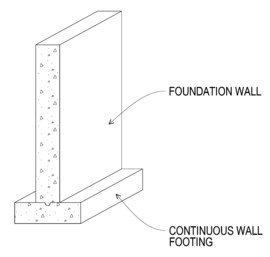 2 Foot: A support for the foundation of a house that also helps prevent settling. It is typically made of concrete reinforced with rebar, but can also be made of masonry or brick. It is usually built under a heavier part of the house like a wall or column, to distribute the weight of the house over a larger area.
2 Foot: A support for the foundation of a house that also helps prevent settling. It is typically made of concrete reinforced with rebar, but can also be made of masonry or brick. It is usually built under a heavier part of the house like a wall or column, to distribute the weight of the house over a larger area.
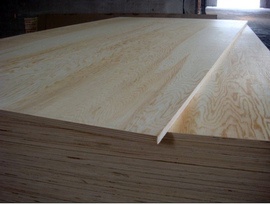 5 Plywood: An engineered construction material manufactured from thin slices of wood glued together in alternating grain patterns for strength
5 Plywood: An engineered construction material manufactured from thin slices of wood glued together in alternating grain patterns for strength
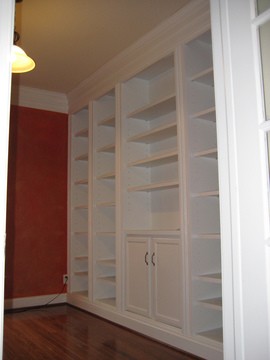 6 Built-in: An item of furniture, such as a bookcase or set of cabinets, that is built directly into the structure of the room. Built-ins are therefore customized to the room and not detachable
6 Built-in: An item of furniture, such as a bookcase or set of cabinets, that is built directly into the structure of the room. Built-ins are therefore customized to the room and not detachable
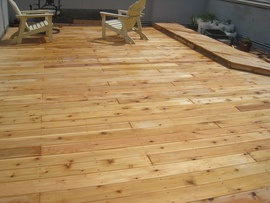 7 Western red cedar: A very large tree native to the pacific northwest, whose wood is used primarily for outdoor applications such as roofing shakes and shingles, decks, posts, and siding
7 Western red cedar: A very large tree native to the pacific northwest, whose wood is used primarily for outdoor applications such as roofing shakes and shingles, decks, posts, and siding
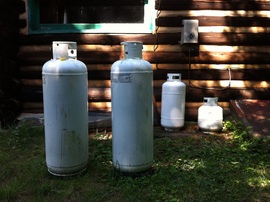 8 Propane: A hydrocarbon gas used as a common fuel source
8 Propane: A hydrocarbon gas used as a common fuel source
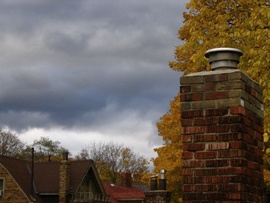 9 Flue: A duct or pipe through which exhaust gases from a fireplace, stove or boiler are released to the outdoors
9 Flue: A duct or pipe through which exhaust gases from a fireplace, stove or boiler are released to the outdoors
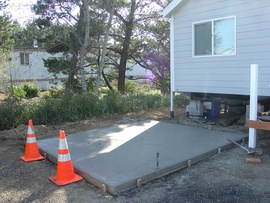 12 Concrete slab: A flat area of concrete that can be used for a variety of purposes, such as a patio or a driveway
12 Concrete slab: A flat area of concrete that can be used for a variety of purposes, such as a patio or a driveway
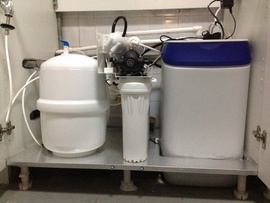 13 Water softeners: A device that reduces the amount of calcium, magnesium, and other minerals in water using ion exchange
13 Water softeners: A device that reduces the amount of calcium, magnesium, and other minerals in water using ion exchange
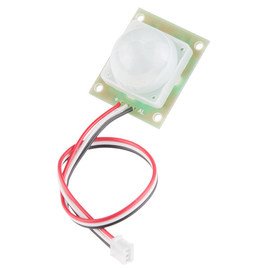 14 Detector: Device that responds to a physical event or change in the environment by emitting an output signal
14 Detector: Device that responds to a physical event or change in the environment by emitting an output signal
How much does it cost to install a sauna in my city?
Cost to install a sauna varies greatly by region (and even by zip code). To get free estimates from local contractors, please indicate yours.









